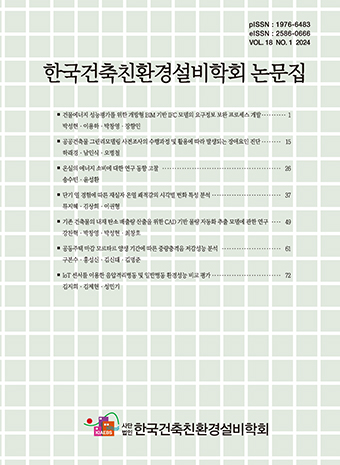Research Article
Abstract
References
Information
Back, J.M., Yee, S.W., Lee, B.H., Kang, D.H., Yeo, M.S., Kim, K.W. (2015). A Study on the Relationship between the Indoor and Outdoor Particulate Matter Concentration by Infiltration in the Winter. Journal of the Architectural Institute of Korea Planning & Design, 31(9), 137-144.
10.5659/JAIK_PD.2015.31.9.137Chen, C., Zhao, B., Cui, W., Dong, L., An, N., Ouyang, X. (2010). The effectiveness of an air cleaner in controlling droplet/aerosol particle dispersion emitted from a patient's mouth in the indoor environment of dental clinics. J R Soc Interface, 7, 1105-1118.
10.1098/rsif.2009.051620031985PMC2880082- Publisher :Korean Institute of Architectural Sustainable Environment and Building Systems
- Publisher(Ko) :한국건축친환경설비학회
- Journal Title :Journal of Korean Institute of Architectural Sustainable Environment and Building Systems
- Journal Title(Ko) :한국건축친환경설비학회논문집
- Volume : 14
- No :2
- Pages :158-170
- Received Date : 2019-11-06
- Revised Date : 2020-04-07
- Accepted Date : 2020-04-07
- DOI :https://doi.org/10.22696/jkiaebs.20200015




 Journal of Korean Institute of Architectural Sustainable Environment and Building Systems
Journal of Korean Institute of Architectural Sustainable Environment and Building Systems








